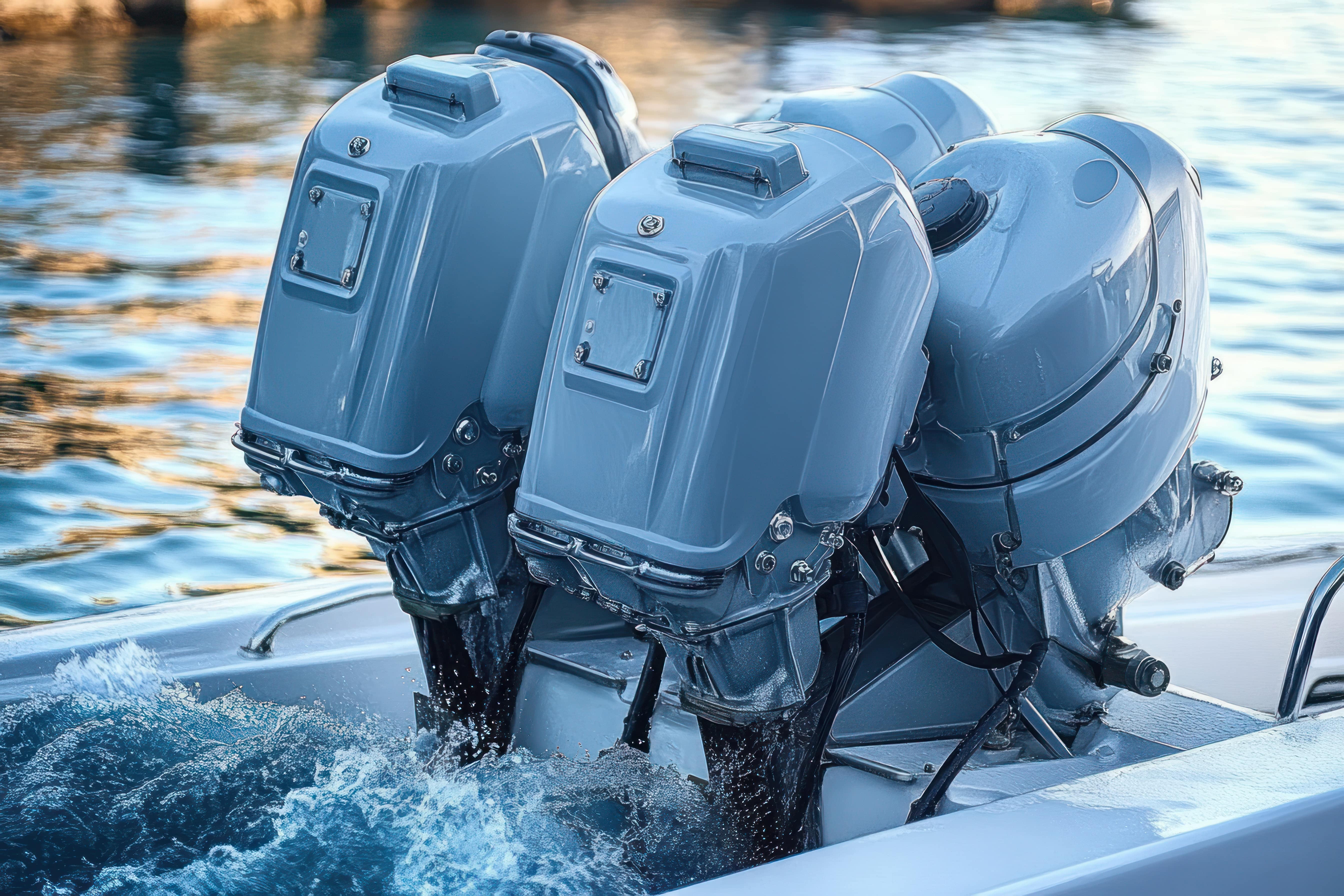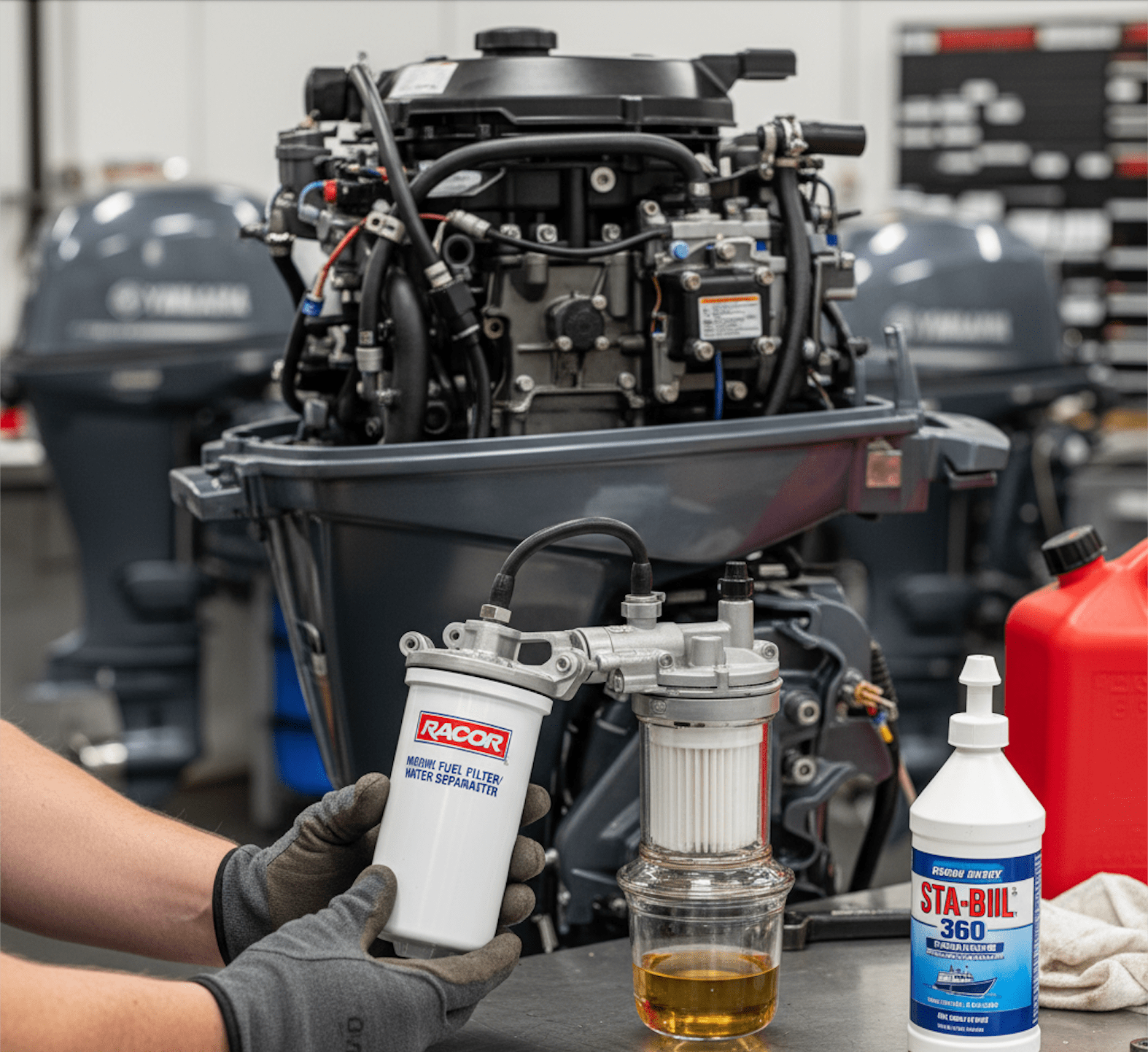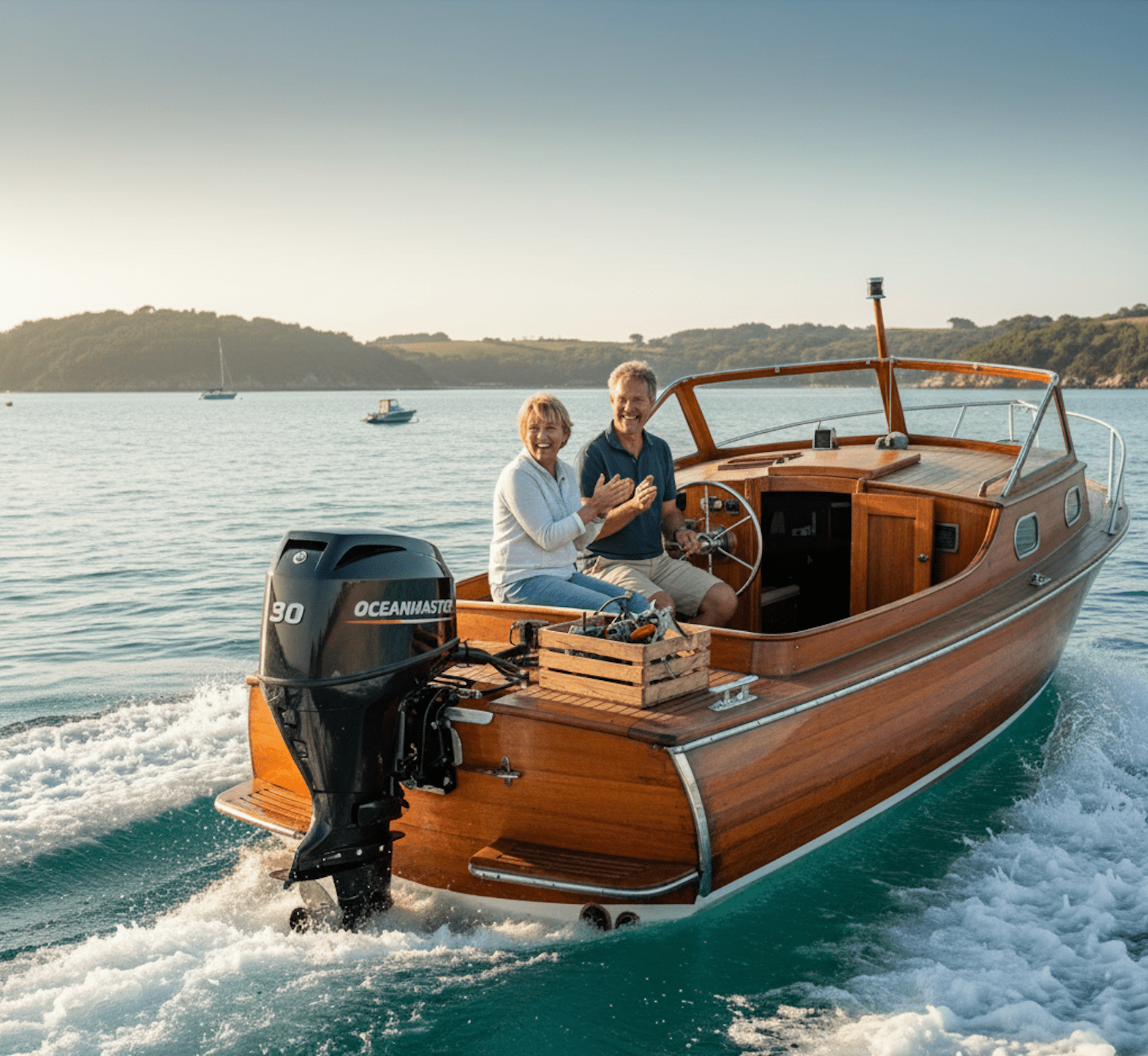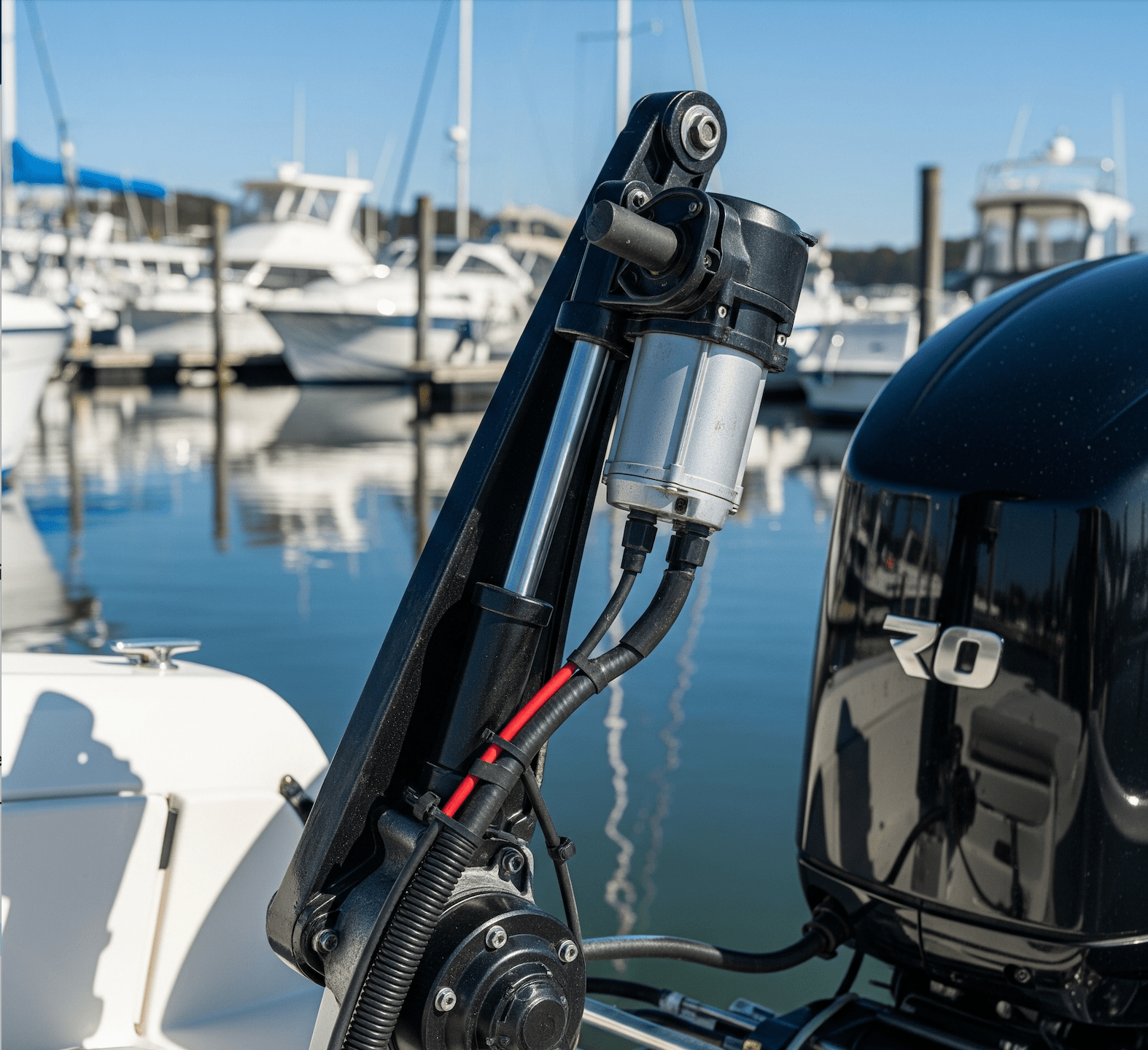Before the roar of a powerful V8 or the silent hum of an electric drive, there was just the rhythmic splash of oars. For centuries, human muscle or sail was the primary propulsion for small boats. But the human desire for speed, convenience, and exploration eventually led to a groundbreaking invention that revolutionized personal boating: the outboard motor.
At All Outboards, we celebrate the journey of marine propulsion. We invite you to take a historical look at the incredible evolution of outboard technology – a journey from simple attachments to the sophisticated powerhouses of today.
The Dawn of Detachable Power: Early Experiments (Late 19th - Early 20th Century)
The idea of a detachable motor for boats wasn't new, with various inventors tinkering with steam or electric concepts. However, the true birth of the modern outboard is often credited to a visionary immigrant.
- 1896: The First Commercial Outboard (Waterman Porto-Motor): American inventor Evinrude, often mistakenly credited with the first outboard, was preceded by Evander French of the American Motors Company. His "Waterman Porto-Motor" was a small, air-cooled gasoline engine clamped to the stern of a boat. While rudimentary, it proved the concept of portable power.
- 1907: Ole Evinrude's Breakthrough: A pivotal moment arrived with Ole Evinrude's invention. Frustrated by rowing a boat to get ice cream for his wife, Bess, on a hot day, he designed a more practical and reliable gasoline outboard. His 1907 motor, and the subsequent Evinrude Motor Company (1909), truly commercialized the outboard, making it accessible to the masses. These early models were simple, heavy, and often temperamental, but they offered unprecedented freedom.
The Roaring Twenties & Beyond: Speed, Style, and Competition (1920s - 1950s)
As the popularity of outboards soared, so did the competition and innovation.
- 1920s: Lightweight & Faster Designs: Manufacturers like Evinrude, Johnson, and Mercury (founded by Carl Kiekhaefer in 1939) began to refine designs, focusing on lighter materials and more powerful engines. Racing became a proving ground for new technologies.
- 1930s: Underwater Exhaust & Gear Shift: Innovations like underwater exhaust systems made outboards quieter, and the introduction of gear shifts (forward, neutral, reverse) dramatically improved maneuverability, making boating much more user-friendly.
- Post-WWII Boom: The post-war era saw a massive surge in recreational boating. Outboard manufacturers responded with more powerful, reliable, and aesthetically pleasing designs. The iconic "white" Mercury outboards became a symbol of modern boating.
The Modern Era: Efficiency, Power, and Sophistication (1960s - 2000s)
This period saw significant advancements in fuel efficiency, power output, and the introduction of advanced electronics.
- 1960s-70s: Increased Horsepower & Reliability: Outboards continued to grow in size and power, with multi-cylinder engines becoming common. Reliability improved, and features like electric start became standard.
- 1980s-90s: The Rise of the 4-Stroke & Fuel Injection:
- Honda Marine (1964): Pioneered the mass production of 4-stroke outboards, initially for smaller engines.
- Yamaha (1984): Entered the U.S. market, quickly becoming a major player with a focus on reliability and performance.
- Electronic Fuel Injection (EFI): Began replacing carburetors, offering better fuel economy, easier starting, and reduced emissions. This was a game-changer for both 2-stroke and 4-stroke designs.
- Late 1990s - Early 2000s: Direct Injection (DI) Revolutionizes 2-Strokes: Companies like Evinrude (E-TEC) and Mercury (OptiMax) introduced direct injection for 2-stroke engines. This technology precisely injected fuel directly into the combustion chamber, making 2-strokes incredibly clean-burning and fuel-efficient, challenging the 4-stroke dominance in terms of emissions and economy.
The Digital Age & Beyond: Smart, Silent, and Sustainable (2010s - Present)
The last two decades have seen outboards transform into highly integrated, intelligent, and environmentally conscious propulsion systems.
- Electronic Controls ("Fly-by-Wire"): Replacing mechanical cables with electronic signals for throttle and shift, offering unparalleled smoothness, precision, and multi-engine synchronization.
- Joystick Piloting: Revolutionized boat handling, especially for multi-engine setups, allowing effortless 360-degree maneuvering and docking.
- Integrated Steering: Eliminating external hydraulic cylinders for a cleaner, more responsive system.
- Higher Horsepower 4-Strokes: Engines like the Yamaha XTO Offshore (V8) and Mercury Verado (V10, V12) pushed the boundaries of power and efficiency, becoming true "powerhouses."
- Connectivity & Diagnostics: Outboards now communicate with multifunction displays, smartphones, and even allow for remote diagnostics.
- The Electric Revolution: The most significant recent shift. Companies like Torqeedo, Mercury (Avator), and others are developing increasingly powerful and long-range electric outboards, promising silent, emission-free boating and a truly sustainable future for marine propulsion.
From Ole Evinrude's ice cream run to today's smart, silent, and powerful engines, the history of outboard motor innovation is a testament to human ingenuity and the enduring love for the water. Each advancement has made boating more accessible, enjoyable, and efficient.
Subscribe to our newsletter and receive a selection of cool articles every weeks.







